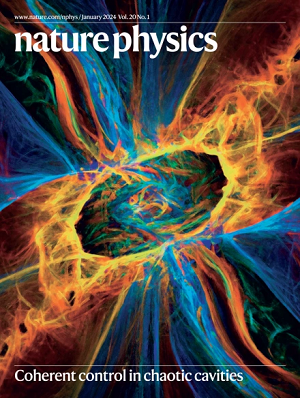Spatial sound decomposer
IF 18.4
1区 物理与天体物理
Q1 PHYSICS, MULTIDISCIPLINARY
引用次数: 0

空间声音分解器
该团队将发射器设想为在特定区域内的声学反射材料,它们之间的空隙充满了空气。位于结构中心的单极声源以相同的功率发射频率在7,600 Hz至12,800 Hz之间(在高音音频范围内)。由于互易性,这种器件的发射和接收特性是可逆的,因此设计为发射体,在实验上比接收器更可行。克里斯蒂安森和他的同事们用数值方法解决了这种发射器的设计任务,这是一个迭代过程,他们将期望的目标发射模式与拟议结构产生的声学模式进行了比较。通过最小化定义良好的价值图形,团队获得了最佳的几何形状。假设压力场是连续的,并且装置中的机械振动可以忽略不计。这个令人生畏的计算练习的结果是一个具有28个亚波长特征的方形掩模,然后他们在衬底上制作了一个10cm × 10cm的结构(如图)。研究人员证明,该装置具有理想的空间光谱响应,并且在源的整个频率范围内具有高效率。
本文章由计算机程序翻译,如有差异,请以英文原文为准。
求助全文
约1分钟内获得全文
求助全文
来源期刊

Nature Physics
物理-物理:综合
CiteScore
30.40
自引率
2.00%
发文量
349
审稿时长
4-8 weeks
期刊介绍:
Nature Physics is dedicated to publishing top-tier original research in physics with a fair and rigorous review process. It provides high visibility and access to a broad readership, maintaining high standards in copy editing and production, ensuring rapid publication, and maintaining independence from academic societies and other vested interests.
The journal presents two main research paper formats: Letters and Articles. Alongside primary research, Nature Physics serves as a central source for valuable information within the physics community through Review Articles, News & Views, Research Highlights covering crucial developments across the physics literature, Commentaries, Book Reviews, and Correspondence.
 求助内容:
求助内容: 应助结果提醒方式:
应助结果提醒方式:


